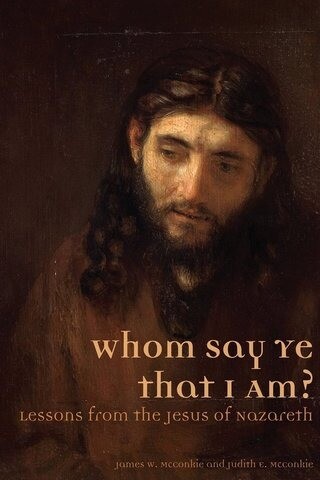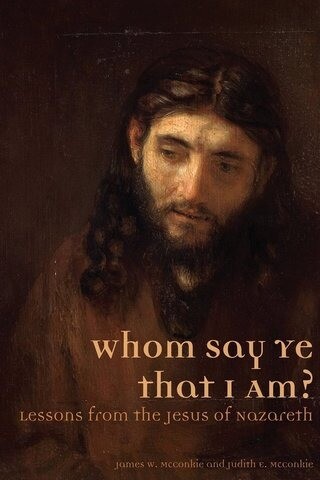Professor Obery M. Hendricks Jr., a scholar specializing in the historical context for the world of Jesus, has observed that “hunger, indebtedness, disease, fear, insecurity, social alienation and seething resentment . . . took their toll upon the morale of the [poor] of Israel.” In addition, he said, these conditions contributed to overwhelming crime rates throughout the region.
Jesus spoke often on the effects poverty and injustice had on the poor. He spoke with great love for them, using terms and stories that indicated a concern for individuals who found themselves in desperate or despised circumstances. On more than a few occasions, the Gospels speak of His “compassion” for the sick, the hungry, the powerless, and the destitute so that even modest studies of the four Gospels find that Jesus behaved in stark contrast to those “leaders and princes” He often chastised. We would expect nothing less. He knew the outcastes. He esteemed them. As the genuine Messiah promised by Isaiah, He set out to shape a kingdom in which there would be recognition of the very practical needs of the most needy in society.
In light of our probing the Gospels for examples of Jesus’ interactions with the poor and afflicted, we decided to rethink the all-too-familiar accounts of Jesus’ feeding thousands of His followers.
On two separate occasions, Jesus responded to hunger by feeding the masses. Some Bible scholars suggest that these similar stories of miraculous feasts were actually differing accounts of the same miracle. No matter. Whether in the first instance, when He fed five thousand, or in the second instance, when He fed four thousand, Jesus’ priorities were to feed them, heal them, and then to teach them about God’s way of living with one another in an earthly kingdom.
Known as the miracle of the loaves and the fishes, the feeding of the five thousand occurred in Matthew after Jesus had heard the news that John the Baptist had been beheaded. Getting into a boat, He was taken to a remote area on the eastern shore of the Sea of Galilee to grieve alone. The crowds heard or saw where He was going and followed Him from many surrounding towns. Throngs made the nine-mile journey on foot around the northern tip of the lake to be with Him.
As soon as He stepped from His boat, He was mobbed by the multitudes. He recognized that many were tired, hungry, and ill. More importantly, the text says He “felt compassion” for them. So He healed their sick; then He turned to Philip and inquired where He could get bread to feed all the people. Incredulous, Philip pointed out how difficult this would be: “Even if we worked for months, we wouldn’t have enough money to feed them!” (John 6:7 NLT). Simon Peter’s brother, Andrew, was only slightly more optimistic. Spotting a young boy in the crowd with five barley loaves and two fishes, he said, “But what good is [that small amount of food] with this huge crowd?” (John 6:9 NLT).
Consider the nature of the available food: the loaves were likely barley bread, the least expensive kind eaten only by the poor. The fishes were probably no bigger than what we know today as sardines, which had been dried or pickled to avoid spoilage. Such a paltry offering was hardly enough to feed thousands.
With no viable solution in sight, Jesus told everyone to sit down (John 6:10). Then He “took the loaves, gave thanks to God, and distributed them to the people. Afterwards He did the same with the fish” (John 6:11 NLT). The people all had as much as they wanted (John 6:11–12). There was even food left over. Their hunger satiated, Jesus then taught them the principles of His gospel. Afterward, He slipped away into the hills by Himself, probably to pray and later to save the disciples from drowning as He walked on the stormy waters of the Sea of Galilee (John 6:19–20).
The next day was most likely the Sabbath. The rescued disciples and Jesus attended services at the synagogue in Capernaum. Many of the same people who had been with Him the day before ran along the shore to join Jesus at the synagogue. Discerning that they were less interested in His message than they were in receiving more food, He sternly warned them that they should seek after spiritual nourishment just as persistently as they sought food to fill their stomachs.
The crowd complained, “What should we do?” Just as God had sent manna to the children of Israel, why, they wondered, wouldn’t this Messiah do the same by sending them more bread without effort on their part (John 6:28 NLT)? Jesus responded, “Believe in [me], the one [God] has sent” (John 6:29 NLT). Then, in one of what William Barclay called the seven great “I Am” affirmations, Jesus declared, “I am the bread of life” (John 6:35 NLT). Then He said that if they would also partake of the spiritual nourishment He brought them, they would not be hungry again. As Jesus taught on a prior occasion, “Man shall not live by bread alone, but by every word that proceedeth out of the mouth of God” (Matt. 4:4 KJV).
As we approach a season of giving thanks as well as giving gifts, we remember these verses that contain a lesson Jesus repeated again and again. It is this: No matter where or what the circumstance, there will always be a need for nourishment to both body and soul. We read the verses in John with the recognition that bellies must be full so that hearts can be touched.
Lead image of The Miracle of the Loaves and Fishes by James Tissot, Boston Museum of Fine Arts/ Wikimedia Commons
James and Judith McConkie are the authors of Whom Say Ye That I Am: Lessons from the Jesus of Nazareth, published by Kofford Books. It is available at Deseret Book stores and online and through barnesandnoble.com and amazon.com. This is the sixth in a series of essays about the book. Watch for more on ldsliving.com.



